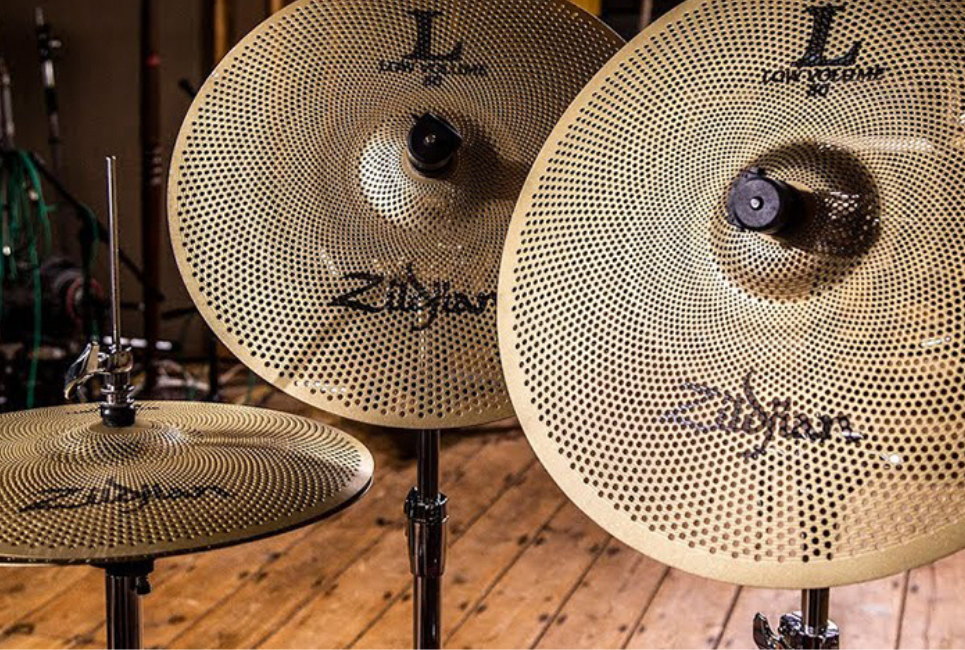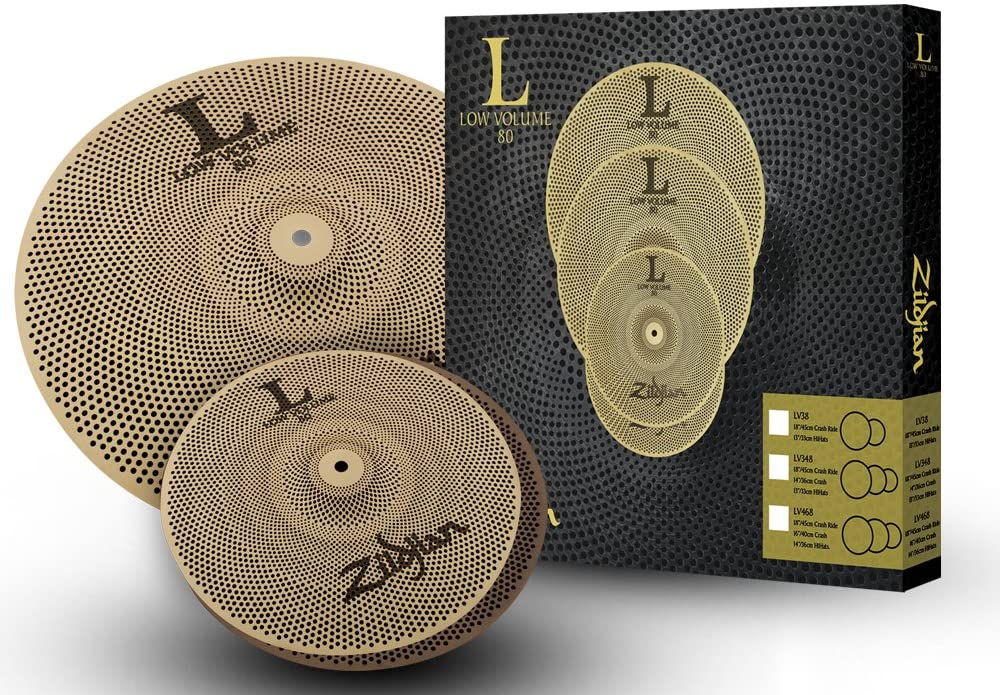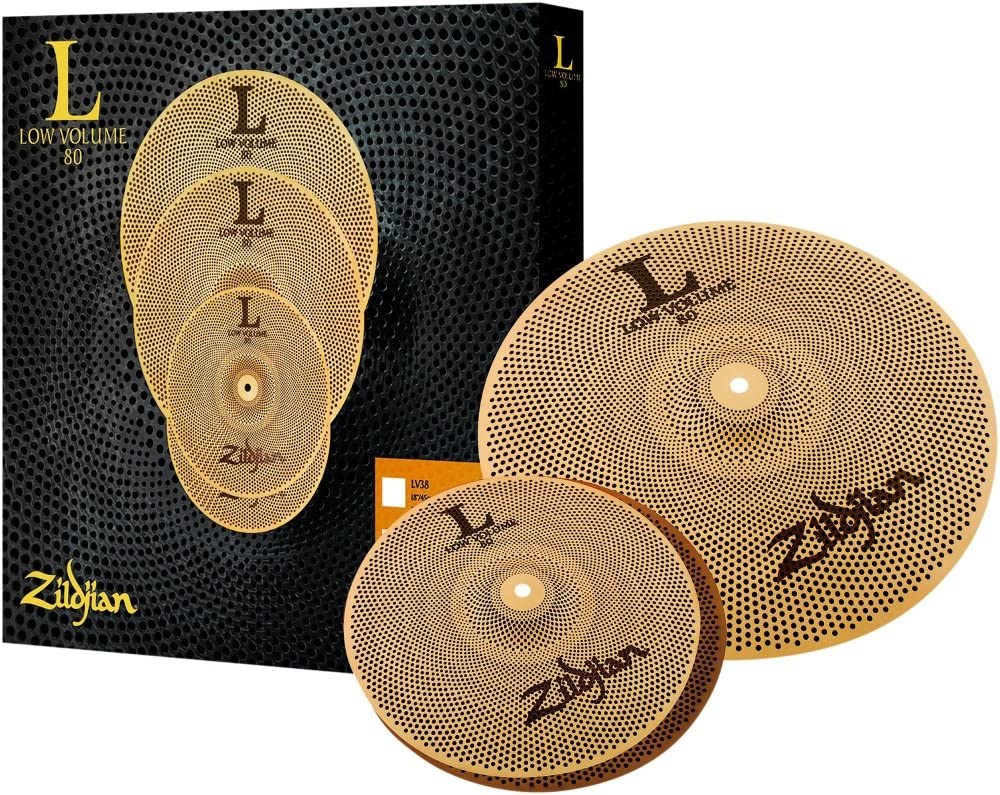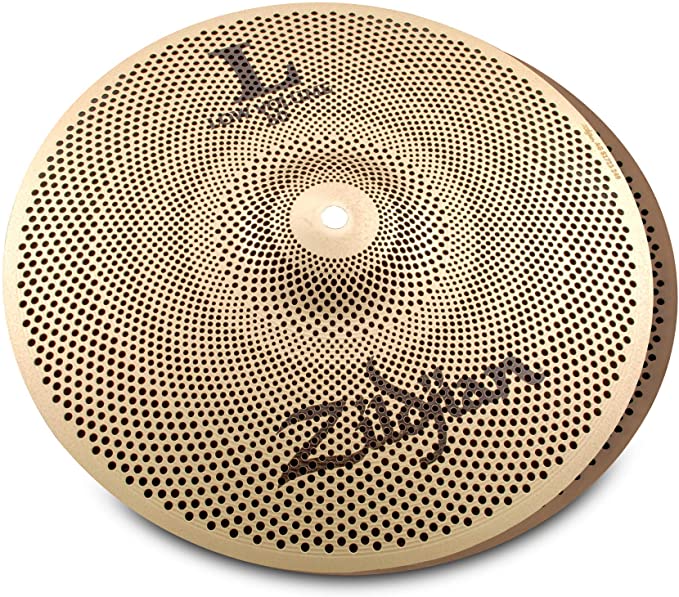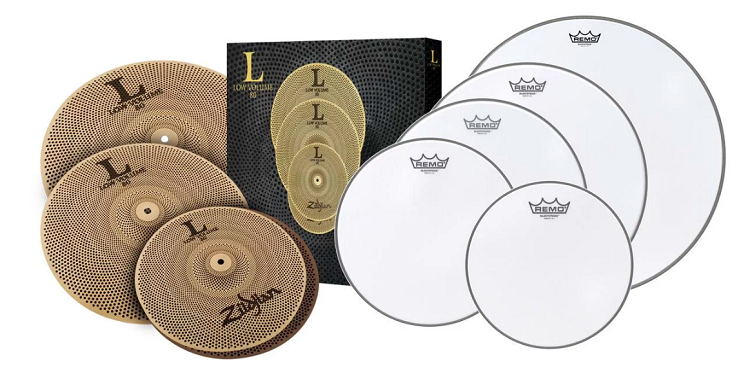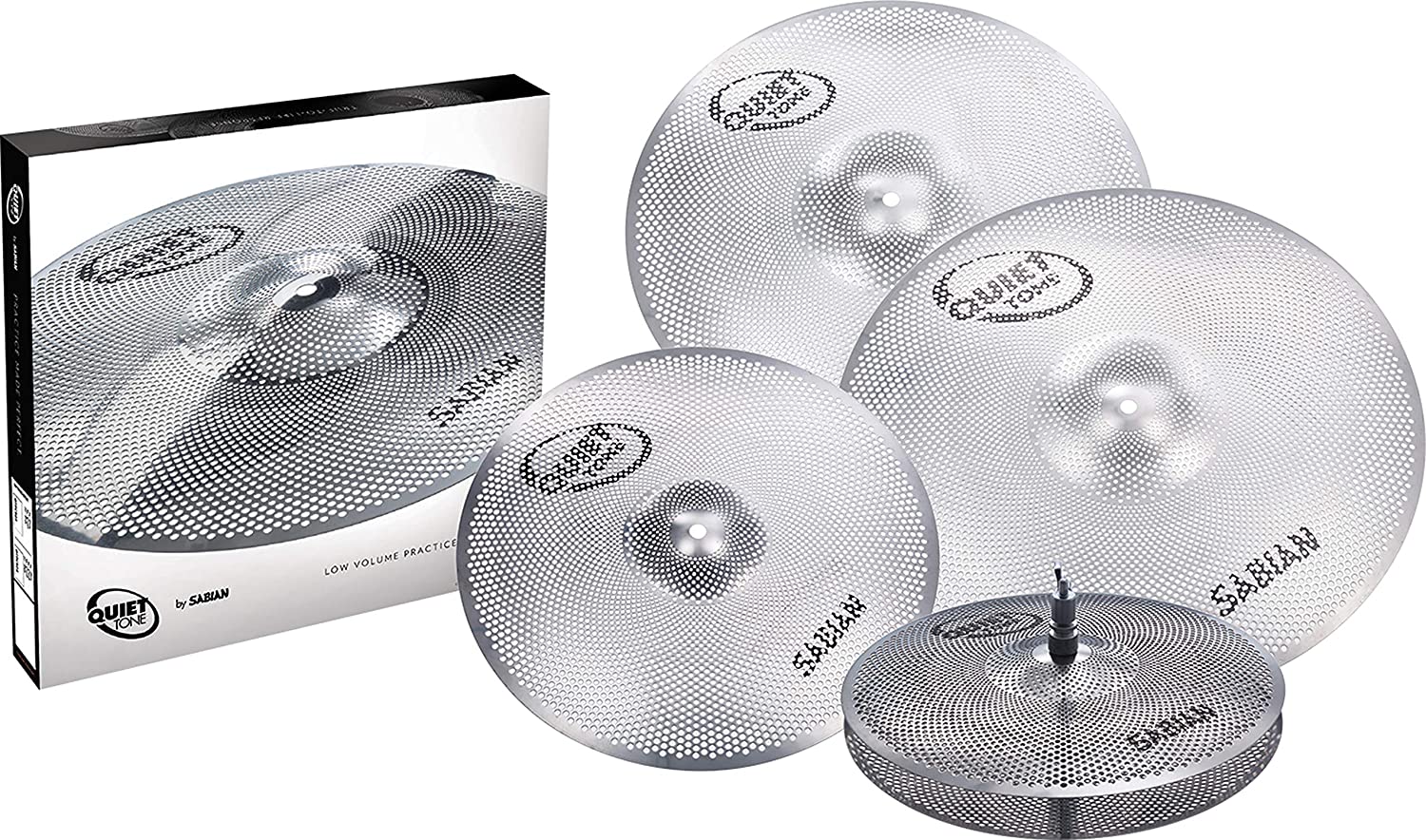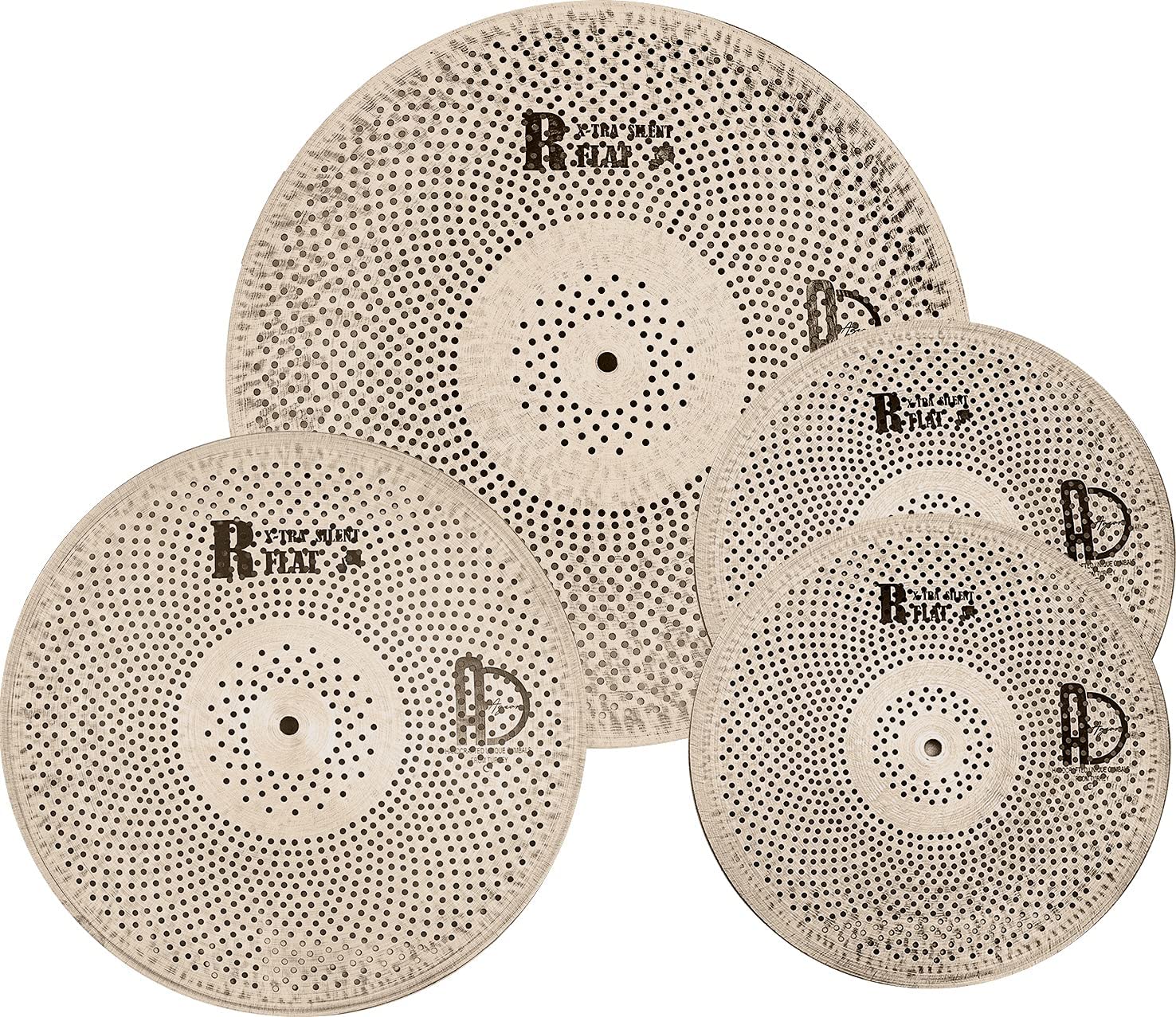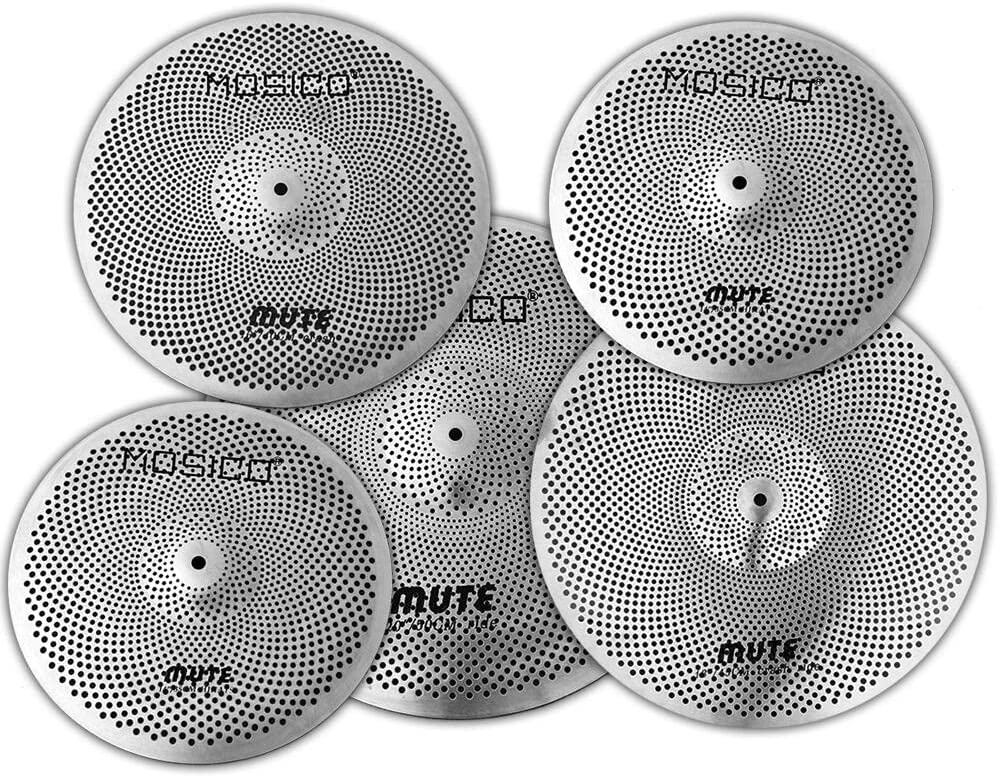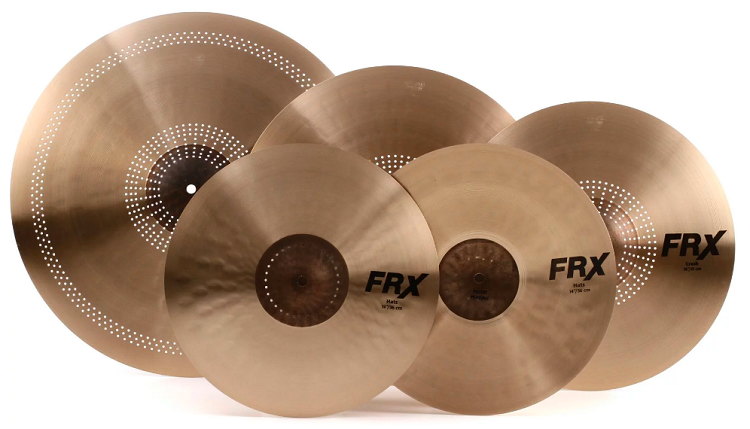When you don’t have the luxury of being able to play a full set of acoustic drums with no noise constraints, electronic drums are often the answer. However, using silent cymbals and drumheads is another option.
These allow you to play your acoustic drums without making a huge noise. In the realm of silent cymbals, the Zildjian L80s tend to be the most popular choice. So, welcome to this Zildjian L80 Silent Cymbal review.
I’m going to break down what makes these cymbals so popular. They’re an attractive option, for sure. There are a few other choices as well, though. We’ll look at the Zildjians, and then I’ll suggest a few others to widen your choices a bit.
Bottom Line Up Front: The Zildjian L80s are silent cymbals that have dozens of holes drilled into them to lower their volume. They’re designed to feel like real cymbals, allowing you to play on an acoustic drum set without bothering anyone with the loud noise.
You get a few size options as well as the option to buy a full set of them in a pack. The most popular pack is the one that comes with L80 cymbals and Remo Silentstroke drumheads.
What are Silent Cymbals?
Before we get to the review, I think it would be good to elaborate a bit more on what silent cymbals are and how they work. Silent cymbals have been a relatively new popularized option over the past decade.
While there were a few options around before that, every drummer I knew, including me, was using cymbal mutes on their cymbals to practice quietly.
Silent cymbals have perforated designs, and the more holes there are, the quieter the cymbals will be. While standard cymbals may produce a noise level around 100 – 120 dB, silent cymbals typically only produce levels around 80 dB.
This allows you to play them in settings that would normally not allow loud drumming. You should be able to play a set of silent cymbals in a bedroom without anyone else in the house being bothered. Not all of them are that soft, but that’s the general idea behind them.
Zildjian L80 Silent Cymbals
Key Features
The Zildjian L80 cymbals are an iconic option when it comes to quieter cymbals. You get them in several different sizes and pack options, which is one of the many reasons that they’re so popular.
The idea behind them is that they’re 80% quieter than regular cymbals, and they still feel highly authentic to play on. They’re made of brass, so you get a similar feeling from that surface that you would with many entry-level cymbals.
In terms of pricing, they sit somewhere in the middle of all the options. As you’ll see in the alternate recommendations section below, you can get more affordable silent cymbals as well as ones that are much more expensive.
Sound
The L80 cymbals have a shimmering tone that is incredibly light. While you still get the sound effect of sticks hitting metal, it’s a lot less aggressive than when you play standard cymbals.
The sounds are also unique to the specific cymbal types. Ride cymbals sound like ride cymbals, and hi-hats sound like hi-hats. While that may seem obvious, it’s a lot better than using cymbal mutes where all the rubber pads sound exactly the same.
The obvious key factor here is that these cymbals are very low in their volume, but just how low are they? Check out this video of Thomas Pridgen absolutely smashing them and notice how they still remain fairly quiet:
Cymbal Type and Size Options
One of my favorite aspects of the Zildjian L80 cymbals is that there are multiple sizes for each cymbal. There are also more cymbal types than the other silent cymbal options have.
The most recent addition to the L80 line is an 18” china cymbal. You can use it to practice playing seriously intense metal breakdowns as quietly as possible. There’s also a 10” splash cymbal available.
In terms of sizing for standard cymbals, the hi-hats are 13” or 14”, the crashes are 14” or 16”, and the ride cymbals are 18”. Unfortunately, you don’t get any options larger than that. Silent drumming setups usually go in small settings, so it makes sense that Zildjian wouldn’t make bigger cymbals. I wish they did, though!
Cymbal Packs
While you can purchase the L80 cymbals individually, the chances are high that you’ll want to buy a full set of them the first time around. So, here are the most common options that you’ll find in music stores.
Zildjian LV38
The LV38 is the smallest box set available. It provides the bare essentials, and it’s a great choice for minimalistic practice setups. Since it’s the smallest option, it’s also the most affordable. I’d recommend getting this one if you have a small setup or if you want to test these cymbals out before buying several of them.
Here are the included cymbals:
- 13” Zildjian L80 Hi-Hats
- 18” Zildjian L80 Crash/Ride
Zildjian LV348
The LV348 is the next step up, and it includes a third cymbal in the form of a 14” crash. While this is the most affordable 3-piece set, I wouldn’t recommend it. I’m not a big fan of 14” crash cymbals, even if they’re purely for the purpose of practicing. They just don’t feel great as they don’t provide much response after hitting them.
Here are the included cymbals:
- 13” Zildjian L80 Hi-Hats
- 14” Zildjian L80 Crash
- 18” Zildjian L80 Ride
Zildjian LV468
The LV468 is the best option, in my opinion. It costs around $400, but it provides you with a set of cymbals that are decently sized. The 16” crash in this set is far superior to the smaller one from the previous set. The hi-hats in this set are also bigger, and as most drummers are accustomed to playing 14” hi-hats, these are preferred by most people.
Here are the specific sizes:
- 14” Zildjian L80 Hi-Hats
- 16” Zildjian L80 Crash
- 18” Zildjian L80 Ride
Zildjian LV468 with Remo Silentstroke Heads
If you want to fully equip your acoustic drum kit with softer playing surfaces, the LV468 with Remo Silentroke heads is the best deal you can get. This package comes with all the cymbals from the LV468 pack and includes a full set of mesh drumheads made by Remo.
These drumheads do the same job as the cymbals, allowing you to play an acoustic kit without making a huge noise. Since they’re mesh heads, they feel similar to playing on an electronic drum set.
Here is everything you get in the box:
- 14” Zildjian L80 Hi-Hats
- 16” Zildjian L80 Crash
- 18” Zildjian L80 Ride
- 10” Remo Silentstroke Drumhead
- 12” Remo Silentstroke Drumhead
- 14” Remo Silentstroke Drumhead
- 16” Remo Silentstroke Drumhead
- 22” Remo Silentstroke Drumhead
Pros
- Most popular silent cymbal option, making them easy to find in stores
- They reduce volume by 80%
- Multiple size options
- Several packs available at different prices
Cons
- There aren’t any L80 cymbals larger than 18” available
Who are these Suitable for?
The Zildjian L80 cymbals are suitable for anyone who wants to practice quietly. Their main function is to reduce volume significantly, and all drummers can benefit from that. Whether you’re a beginner or pro, these are cymbals that you’ll love to use.
I love these cymbals for the sake of teaching online drum lessons. While I have an elaborate microphone setup now, I used to teach using only the internal mic on my laptop. As you can imagine, loud drums tend to distort heavily through that mic. Having quieter cymbals such as these would have made things a lot easier.
They’re a fantastic option for multiple purposes. However, there are some other options to consider. I wouldn’t set your sights on these until you check these other ones out as well.
Other Alternatives to Consider
Sabian Quiet Tone Cymbals
The Sabian Quiet Tone cymbals are the closest competitor to the L80s. Sabian and Zildjian are two closely competing brands, so you can expect some competition in the low volume cymbal world as well.
The two differences with these are that they’re a bit louder, and you get larger size options. If the 18” ride cymbal was a limiting factor for you with the Zildjian cymbals, these might be your preferred choice, thanks to the 20” ride cymbal.
The fact that they’re louder may be a bit of a turnoff. If you want a solution that is as soft as possible, the Zildjian cymbals are better. However, the fact that these are louder makes them ideal for playing in small and intimate venues.
Finally, these Sabian cymbals are a bit more expensive, but this is because packs of them come with four cymbals instead of three.
Pros
- Larger size options than the Zildjian L80s
- Louder volume lets you use them for live gigs in small venues
- Packs come with four cymbals instead of three
Cons
- More expensive than the Zildjian L80s
- Louder volume makes them less ideal for quiet practicing
Agean Flat R Low Noise Cymbals
The Agean R cymbals are some of the highest-quality low-volume cymbals you’ll find out there. These are made from B20 bronze, whereas most other quiet cymbals are made from brass. They’re a lot more expensive, but they sound so much better.
You get the same depth of tone from these as you get from high-end standard cymbals. If money isn’t a limiting factor, I’d highly recommend getting these for your kit. I know a drummer who uses them for gigs in restaurants, and they work incredibly well.
Agean isn’t a well-known cymbal brand, so Amazon would be the most likely place to buy a set of these. The chances are quite low that you’ll find them in your local music store.
Pros
- High-quality cymbals made from B20 bronze
- Best option to use for live gigging
- Standard cymbal sizes
Cons
- Very expensive
Mosico Low Volume Cymbals
Looking at the opposite end of the spectrum, these Mosico Low Volume cymbals are one of the most affordable options on Amazon. They’re a great pick for anyone looking for an economic practice setup that still allows you to play on real cymbals.
You get a 4-piece setup when you buy the pack, and all the cymbals have standard sizes. Overall, it seems like the best option considering the price. However, these cymbals don’t have as much depth of tone as the previous options. They also produce quite a metallic pinging sound when played.
You don’t get any variation when you play different parts of the surfaces, making them the least musical option. Because of this, I’d say they’re a great choice for beginner drummers who haven’t learned to recognize those sonic subtleties just yet.
Pros
- One of the most affordable quiet cymbal options
- Standard cymbal sizes
- They feel great to play
Cons
- They don’t sound as good as the other options
Sabian FRX
If you’re looking for standard cymbals with lower volumes than normal, check out the Sabian FRX line. These cymbals are designed to sound and feel like normal cymbals. They just have reduced frequencies to make them more suitable for low volume settings.
I wouldn’t recommend them for practicing quietly, though. They’re still quite loud. These are ideal for playing in softer gigging settings while still having the sounds of real cymbals. If that’s what you want low volume cymbals for, consider these as an alternative.
The downside of these, and it’s a big one, is that they’re incredibly expensive. A full set of them costs just under $2000, making them one of Sabian’s most expensive cymbal packs.
Pros
- Standard cymbals with reduced frequencies to make them a bit softer
- Incredibly rich and responsive tones
- Best option to use in quiet venues
Cons
- Very expensive
FAQs
Answer: I wouldn’t recommend it, considering there are so many holes in L80 cymbals. If you want them to maintain their shiny surface, you should regularly wipe them down with a damp cloth.
Something else to consider is that older cymbals with more grime on them tend to lose a slight bit of resonance, and that’s something you may want when aiming to keep things as quiet as possible.
Answer: Considering that they have only 20% of the volume that standard cymbals do, L80 cymbals would work in incredibly soft gigging environments. I could see them being used in a restaurant, but not in a pub where the talking can get a bit rowdy.
The Sabian Quiet Tone cymbals are a better option, and the Sabian FRX cymbals are the best option.
Answer: Yes. It takes a bit of trial-and-error work, but it is possible to connect triggers to L80 cymbals and run them through an electronic drum module to get different digital sounds. You can do the same thing with low volume drumheads, allowing you to create a full hybrid drum setup.
Answer: Online teaching is one of the best reasons to use L80 cymbals. Since onboard microphones aren’t great at picking up high levels of volume, standard cymbals tend to either distort the sound or cut it off completely when using apps like Zoom.
If you use L80 cymbals when playing, the sound won’t be distorted, and the person on the other end of the call will hear everything clearly.
Answer: Zildjian is one of the most popular cymbal brands in the world. When looking for cymbals of different kinds, Zildjian is always an option that comes up. The L80s have found massive success because of this.
When drummers ask me about low volume cymbals, suggesting the Zildjian L80s will always be my first response. It’s the same thing with many other drummers that I know.
Conclusion
The L80 cymbals are a top seller from Zildjian. They’re a fantastic option to consider if you want cymbals that won’t bother your neighbors. To get a drum setup that you can comfortably play at nighttime, you should get a set of Remo Silentstroke heads to pair with them for your kit.
However, there are a few other cymbal options to consider that you may prefer. Check out all the options that I listed as alternatives, and make a decision from there.
For more interesting readings on drum gear, check out the following articles:

